![]()
By Gypsy Blue Rose


![]()
By Gypsy Blue Rose

![]()
By Gypsy Blue Rose
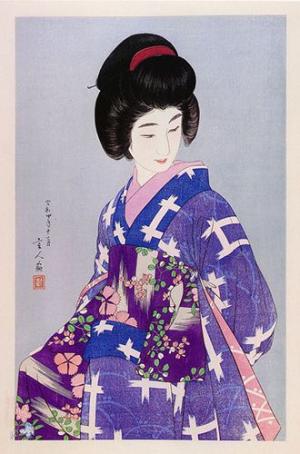

![]()
By Gypsy Blue Rose

![]()
By Gypsy Blue Rose
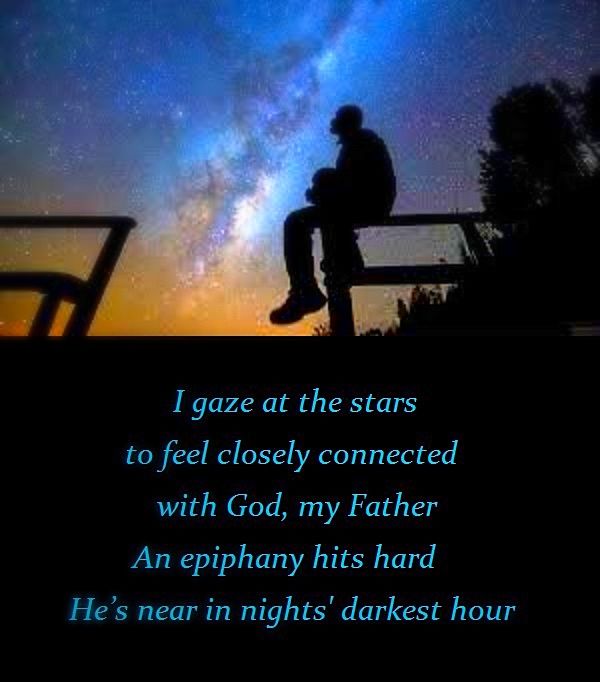
| Author Notes |
**Note** In using the word nights', I am implying that I go outdoors and gaze up at the heavens for nights on end, in succession--without fail.
Every...single...cloudless...night. Thanks so much for reading, and please...be gentle, lol. I'm fairly new to the tanka form, so any and all feedback would be very much appreciated. 
|
![]()
By Gypsy Blue Rose
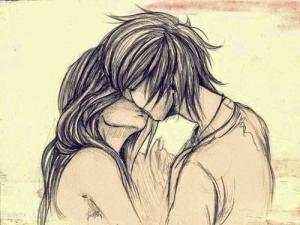
Our last kiss promised
I will see you again
when the day is fair
Before next full harvest moon.
Our hearts will remember.

![]()
By Gypsy Blue Rose
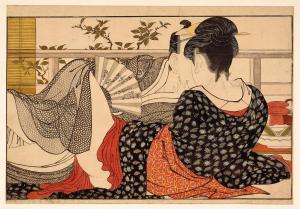
![]()
By Gypsy Blue Rose
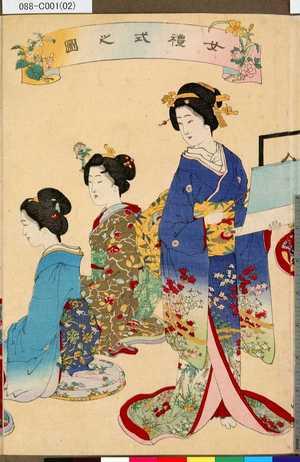
This announcement is informational and it has been approved by FanStory. Thank you for reading. No need to review.
From March 6, 2017, to March 30, 2017
Tanka Class Summary
An introduction to Tanka, an ancient Japanese poetry form.
Tanka is a form of Waka. The word waka means "Japanese poem," and it is a form so basic to Japanese literature that Japanese still study and write it today. It is also known by the name tanka, which means "short poem."
Details on Class and Learning Objectives
After completing this course, students should be able to ...
-Identify the proper tanka structure
-Ability to review tanka
-Gain knowledge of Japanese short poetry history, including Japanese Imperial Court tanka
-Gain knowledge of the best tanka masters in history
-Compose tanka
-Analyze a tanka to determine its structure and intent
-Recognize and understand the difference between traditional and contemporary tanka
-Understand how a poem pivots from a poetic image to a linked emotional response
Class Schedule - Weeks at a glance
Methods of teaching for this course are as follows- 8 hours of lecture, hands-on assignments, class discussions, group assignments, reading, and videos.
Sunday, March 6- ORIENTATION including schedule adjustment
Thursday, March 9- Early Japanese Tanka History
Sunday, March 13- Japanese Uses of Tanka
Thursday, March 16- Japanese Tanka in the 20th Century
Sunday, March 20-Tanka as an English-Language Poetry Form
Thursday, March 23- Teika's Ten Tanka Techniques
Sunday, March 27- Modern Japanese Techniques
Thursday, March 30- Comparing Haiku with Tanka
click here to go to the fanstory classroom for more information
click here FanStory Classes Tour
Thank you,
Gypsy Blue Rose, Haiku Poet
Fanstory Haiku Instructor
A member of the Haiku Society of America
Credentials-
Two Years writing haiku poetry
Three published books of haiku
Bachelor Degree from the University of Phoenix
10 years of teaching experience
| Author Notes |
FanStory offers writing classes.
Some of the benefits of taking FanStory classes - -study at your own pace -your lessons and assignments are permanently kept in our system, you may access them anytime -lessons and classroom are accessible world-wide 24-hours a day 7 days a week. -the classes are designed for seven students or less so you get personal attention -compared to poetry classes anywhere else, our price is very reasonable and when you sign up for the class, you receive 20 fanstory dollars as a thank you gift. -our classrooms have an audio system so the students are able to speak with the instructor and the other students. This is a great plus and makes the classroom experience as real as a real classroom. -most instructors write poetry on FanStory so you can check their work at the touch of your finger tips. Take benefit of the wonderful opportunity that FanStory offers. Classes Tour |
![]()
By Gypsy Blue Rose

| Author Notes |
I read a tanka by Izumi Shikibu and while pondering the meaning of the poem, I was inspired to write my own one.
Both tanka are different but share similar sentiments. I found it to be a good reflection exercise. please cleack here if you want to read the definition of tanka Thank you for reading me, Gypsy Haijin Sensei Fanstory Haiku Instructor and Poet Member of the Haiku Society of America ~*~ a new haiku class every month ~*~ Undisturbed, my garden fills with summer growth! how I wish for one who would push the big grass aside. Tanka is a Japanese Poetic form that has been around since the 7th century. It's unrhymed and under 31 syllables with a 5/7/5/7/7 pattern. This pattern is not a strict rule since English syllables and Japanese ONJI are so different. Most English tanka contain 20 to 25 syllables. https://en.wikipedia.org/wiki/Tanka |
![]()
By Gypsy Blue Rose
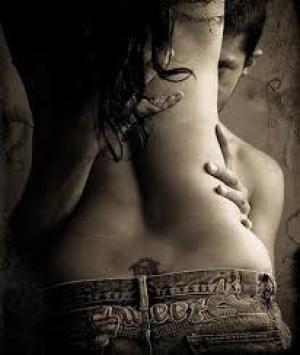
| Author Notes |
You are welcomed to add tanka to my multi=author book. Just click ADD CHAPTER. You keep a copy in your portfolio and you keep your reviews as usual. Tanka, the 5-line lyric poem of Japan is quickly becoming popular in the English-language poetry community. Like haiku, tanka usually is well-grounded in concrete images but also is infused with a lyric intensity and intimacy that comes from the direct expression of emotions, as well as from implication, suggestion, and nuance. If you already write haiku and have ever wanted to add commentary to your verses, tanka is the form for you! The tanka aesthetic is broad and all-encompassing. You can write on virtually any subject and express your thoughts and feelings explicitly. In the 7th century Japanese Imperial Court, women dominated the genre and tanka was used as a communication form between lovers. The women would write the first three lines (hokku) and the men the last two lines (wakiku). |
![]()
By Gypsy Blue Rose
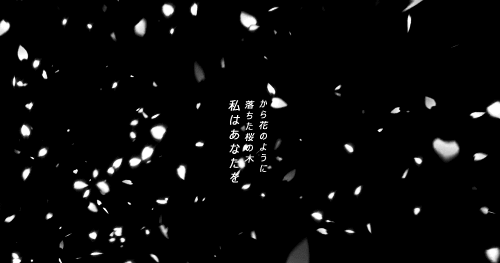

| Author Notes |
Cherry blossoms have long symbolized evanescence, beauty, the beauty of evanescence; and Japan's warrior ethos has always glorified self-sacrifice; yet it took 20th-century total war to unite those strands into a notion that men dying for their divine homeland became, in effect, cherry blossoms who acquired an unearthly, transcendent beauty. Other nations too, of course, have bred warriors and patriots imbued with a vision of the individual life as a trivial thing compared to the great cause being served. But few images have invested that vision with such eerie, appalling beauty as the cherry blossom. 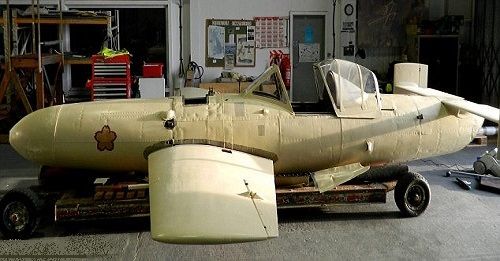
A photograph of the Ohka flying bomb One of the strangest and most poignant weapons in the history of warfare was a one-way glider which would be transported at high altitude close to the target and would then dive down at enormous speed to detonate its warhead onto the enemy ship. The suicide craft itself with its ton of tri-nitro-anisol (explosive) would sink, or at least incapacitate, the ships of the enemy navy, which were now (1944-45) slowly strangling Japan's home islands; in addition, the use of this new secret weapon would overawe and demoralize the foreigners, who were psychologically unprepared for such methods. Oka, as this bizarre weapon was called, is an alternate reading of sakana hana -- or cherry blossom. The American enemy had another name for it: Baka bomb. Baka means "idiot." Some 5,000 Japanese pilots "fell like cherry blossoms." The damage their cherry-blossom craft inflicted on U.S. and Allied warships was slight. Psychologically, the impact was, as foreseen, tremendous -- but not in the manner the Japanese had expected. Far from demoralizing the enemy, it seems to have solidified their view that extraordinary measures were needed against this extraordinary nation -- hence the atom-bombing of Hiroshima and Nagasaki on Aug. 6 and 9, 1945, respectively. Japan surrendered on Aug. 15, 1945. That same day, Vice Admiral Takijiro Onishi, the brain behind the Oka suicide bombing, ritually disemboweled himself at his official residence in Tokyo. He, too, was a poet. 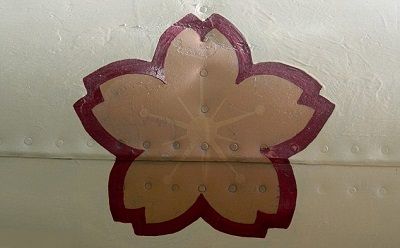
The plane is also emblazoned with a cherry blossom, which gives the aircraft its name. 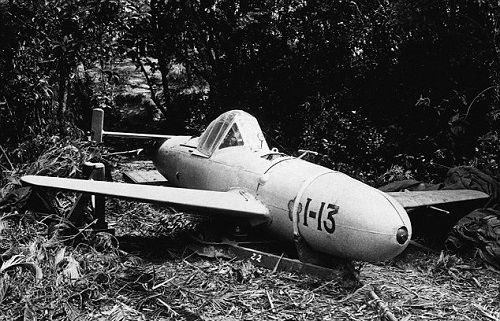
Crashed: An Ohka plane captured in Okinawa after failing to hit its Allied military target. |
![]()
By Gypsy Blue Rose
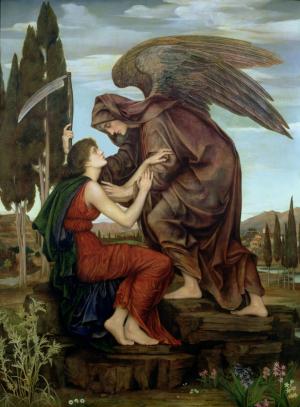


| Author Notes |
Everyone is welcome to add tanka to my multi-author book.
Today I thought about death, it just popped into my mind. Well, perhaps is because I am teaching a tanka class, and one of the lessons is about death poems. They are called Jisei. The death poem is a genre of poetry that developed in the literary traditions of East Asian cultures, most prominently in Japan. I grew up in Spain and I went to catholic school. The nuns taught me the story of The Passover and the Plague of the Firstborn (Exodus 11:1-13:16) I was very young and the idea of having an angel of death come to the door looking for the first born scared the hell out of me. No pon intended. I thought about the ancient Jews in Egypt who painted lamb's blood on their doors so that the plague could pass their houses. In the past, I suffered from chronic depression. I didn't take medication and at times life was miserable. But there was a time when death was my constant companion and I am not a stranger to the dark side. 15 millions of Americans suffer from depression yet there is a great deal of stigma with the statement... I have a mental illness. Why is that? Now I take medication and see a doctor regularly, my disease is under control and my life is good. I am grateful to be alive and I consider myself lucky. I have beautiful and healthy children, a wonderful man who loves me, work I enjoy, and I have all I need. life is a blessing and every day I give thanks for being alive. The Artwork is "the Angel of Death" by Evelyn De Morgan, 1881 Azrael is often identified with the Angel of Death of the Hebrew Bible. Azrael source mental illness info source more info about death poems and source |
![]()
By Gypsy Blue Rose
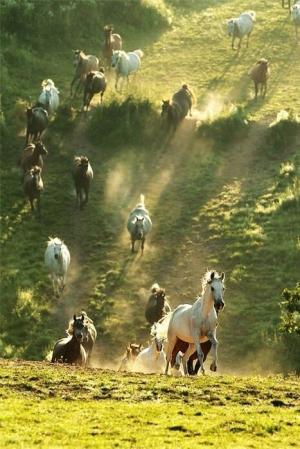
| Author Notes | This is my first Tanka ever, so please feel free to let me know if there's anything to change. |
![]()
By Gypsy Blue Rose

| Author Notes |
You are welcomed to post to my multi-author tanka book.
Tanka is an ancient Japanese poetic form written in 31 syllables or LESS in five lines with an approximate 5/7/5/7/7 syllabic distribution giving a complete picture of an event or mood. |
![]()
By Gypsy Blue Rose

| Author Notes |
You are welcome to add a tanka to my book. Just click ADD CHAPTER.
Tanka is a type of Japanese poetry composed of 20 to 31 syllables in English in five lines. A popular form is 5/7/5/7/7 syllabic breakdown. The poem aims to give a complete picture of an event or mood. REVIEW TIPS= how is the presentation? does the poem bring up a memory or an emotion? is the poem 31 syllables or less? how is the flow? do the phrases connect well? does it flow? |
![]()
By Gypsy Blue Rose

| Author Notes |
Two new pieces of research into the First World War claim that previous figures for the conflict's death toll and the numbers who suffered from shell shock have been vastly underestimated.
Antoine Prost, a French historian, argues that previous figures have been based on miscalculations and errors, which have led different countries to minimize their losses. He believes the British deaths, for instance, may have been far higher than previously thought. No precise death toll for the conflict has ever been established. Most current estimates for combatants put the figure at around 9.5 million. -- 19 was the official age for a British soldier to be sent overseas to serve but many lied about their ages. Approximately 250,000 British lads did that and served whilst they were still under-aged. The youngest was reported to be only 12. -- A soldier's average life expectancy while in the trenches was six weeks. Some of the people who were mostly at risk of early death were the junior officers and the stretcher bearers. -- In the four years of WWI, 25 million tons of supplies were sent to the British forces serving on the Western Front -- three million tons of food and five million tons of hay and oats for the horses. -- As the war progressed, food rations for the soldiers were significantly reduced to keep up with the supply-man ratio. There usual meal while in the trenches was maconochie -- so named after the company that made this thin soup of turnips, potatoes and carrots. Other food servings included bully beef and Marmite. There was also a small ration for rum and tea, but soldiers found the latter with terrible taste since water at that time was treated with chloride of lime to purify it. -- About 6,000 men were killed on daily basis during WWI. This amounted to over 9 million deaths throughout the war. --An amazing number of 65 million men coming from 30 various countries fought in WWI. -- Over 25 million miles of trenches were dug and zigzagged through the Western Front alone. A number of these trenches were nicknamed Bond Street or Death Valley while the German lines were dubbed as Pilsen Trench, so on. -- Germans had superior trenches compared to the Allies. These trenches were built to last, some had even had shuttered windows and doorbells. Trenches of opposing sides were 50 yards apart in Hooge which was near Ypres. -- A soldier get to spend 15% of the year in the frontline, that would be about no more than two weeks at a time. -- During the Battle of Mons in 1914, the British troops fired their Lee-Enfield rifles so efficiently that the Germans believed they were up against machine guns. -- The Commonwealth War Graves Commission currently honors 1,117,091 soldiers from Britain and the Commonwealth, although that figure is gradually rising, as various ongoing projects identify individuals who were left off the official records. As always, thanks so much for reading...  
|
![]()
By Gypsy Blue Rose

| Author Notes |
Boho is a gypsy style and in this Poem it refers to a boho skirt.
Tanka is a Japanese poem consisting of five lines, with approximately 31 syllables in a 5/7/5/7/7 pattern and giving a complete picture of an event or mood. The count is approximate due to the difference between the Japanese and the English language. 
 A Gypsy Flower click here for more info A Gypsy Flower click here for more info
|
![]()
By Gypsy Blue Rose
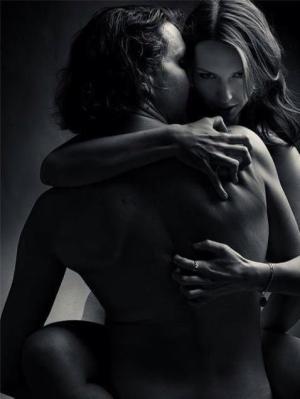 Warning: The author has noted that this contains the highest level of sexual content.
Warning: The author has noted that this contains the highest level of sexual content.

| Author Notes |
5/8/5/7/4 in tanka there is no need for a kigo or seasonal reference.
Erotica and the Tanka genre go hand in hand. In Japanese, the Tanka form is 31 syllables, arranged 5-7-5-7-7 'on' but in English is approximately 20 to 31 syllables due to the translation and language difference. You have yet to touch This soft flesh, This throbbing blood -- Are you not lonely, The expounder of the Way? by Yosano Akiko's Midaregami (Tangled Hair) This is a poem written in 1901 by a twenty-two-year-old emerging poet of that time, Yosano Akiko (1878-1942). Akiko, in this Tanka poem, expressed her love, sexuality and the liveliness of youth by using such imagery as "soft flesh" and "throbbing blood." Although Meji Japan was modernizing and starting to accept the Western culture, the majority of women still lived in the old way; they were confined by the conventions of the old feudal system. Women normally accepted arranged marriage, and after marriage, they were expected to play a wifely role: as the saying "Onna sankai ni ie nashi" (there is no home for women in the past, present nor future) teaches, women were supposed to submit to fathers, husbands, and sons, and were always the possessions of others. Women's domestic and social roles were to produce children, particularly boys who would inherit the family name and support the strong nation. Women were imprisoned by the idea of womanhood as defined by society. Even today, some people are narrow-minded when it comes to expressing sensuality in an open manner. These couple of poems are by a contemporary poet. 
silent bedroom whispers linger in my hair... before you leave one more cup to fill me Pamela A. Babusci First published in Five Lines Down 1995 
I am a prisoner in this snowflake melt me Pamela A. Babusci First published in Five Lines Down 1995 
at dawn my aching limbs my wanton heart... somehow, somewhere you invaded me Pamela A. Babusci First published in Five Lines Down 1995 
I remove my cross before we lie down together we make shadows on the wall Pamela A. Babusci First published in Frogpond 1995 = = = = = = = = = = = = = = = = = = = = = = = = = = = = = = = = = = = sources: click here for source click here for source art work by Pablo Inselvini and google public domain = = = = = = = = = = = = = = = = = = = = = = = = = = = = = = = = = = = = = = = == Vocabulary Avaricious =greedy; covetous. Titillate= to excite or arouse agreeably: |
![]()
By Gypsy Blue Rose

| Author Notes |
Tanka is an ancient Japanese poetic form that is still popular all over the world. The pattern is approximately 31 syllables in five lines of 5/7/5/7/7 syllabic count and aims to give a complete picture of an event or mood. click here to read more
Takeko was a woman Samurai and a prodigy in the literary and martial arts, training with a variety of instructors in Edo. Her certification (menkyo) was in Hasso-Shoken, a branch of the major Itto-ryu tradition. click here for more The Bushido Code is the way of the warrior, is a Japanese term for the samurai way of life. click here for more The Bushido code is typified by eight virtues= 1-Righteousness 2-Be acutely honest 3-Heroic Courage 4-Respect 5-Integrity 6-Honour 7-Duty and Loyalty 8-Self-Control Associated virtues= 1-Filial piety 2-Wisdom 3-Fraternity |
![]()
By Gypsy Blue Rose

| Author Notes |
I am in the process of moving and at the present time, I am surrounded by piles of boxes... it's frustrating. :/
|
![]()
By Gypsy Blue Rose



| Author Notes |
Tanka is an ancient Japanese poetry form. The basic structure consists of 5 lines, 5/7/5/7/7 syllabic scheme, about nature, image, and emotion. In the Japanese Imperial Court of the 7th century, tanka was used as a form of communication between lovers. Due to the difference in language, the syllabic count may be different in English.
I am grateful to Dean Kuch for creating this unique horror tanka contest. I admire all artists who dare to break the mold of strict rules which smothered creativity. I welcome all kinds of Japanese poetry genre. Death has been an essential part of tanka literature from the earliest days. The ancient Japanese loved ghost stories and collected folktales and other purportedly true stories. Tanka, with its focus on image and emotion, is an imminently suitable vehicle for supernatural tales with their vivid and bizarre imagery. Tanka, with its efficient use of language, is able to present the emotional heart of such stories. The skillfully chosen detail says more than a Hollywood budget's worth of special effects. The best horror movies know that's slowly opening a door is terrifying than buckets of gore. This understated kind of horror is perfectly suited to tanka. more... Thank you for reading me, Gypsy |
![]()
By Gypsy Blue Rose

| Author Notes |
Reviewing tips: how is the presentation? what thoughts and feelings come to mind? do you get a visual picture? does the tanka flow well forward and backward?
Tanka is a Japanese poem consisting of five lines, the first and third of which have five syllables and the other seven, making 31 syllables in all and giving a complete picture of an event or mood. The syllable count in English may vary but one must aim to keep it under 31 syllables. You are welcome to add a tanka to my multi-author book. Thank you very much for reading, my friend :) May your day be filled with laughter and joy. namaste, Gypsy Haijin Sensei Fanstory Instructor and Poet Member of the Haiku Society of America ~*~ a new haiku class every month ~*~ <>Haiga class starts on May 1st <> |
![]()
By Gypsy Blue Rose
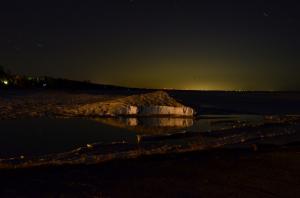
| Author Notes |
Collaborative tanka, Hitcher wrote the first three lines and I wrote the last two, he gave me permission to post.
It's a school project but it came out so good I want to keep a copy in my tanka book. This is a multi-author book, you are welcome to add to it. You keep a copy in your own portfolio and all credit and reviews go to you. |
|
You've read it - now go back to FanStory.com to comment on each chapter and show your thanks to the author! |
![]()
| © Copyright 2015 Gypsy Blue Rose All rights reserved. Gypsy Blue Rose has granted FanStory.com, its affiliates and its syndicates non-exclusive rights to display this work. |
© 2015 FanStory.com, Inc. All Rights Reserved. Terms under which this service is provided to you. Privacy Statement